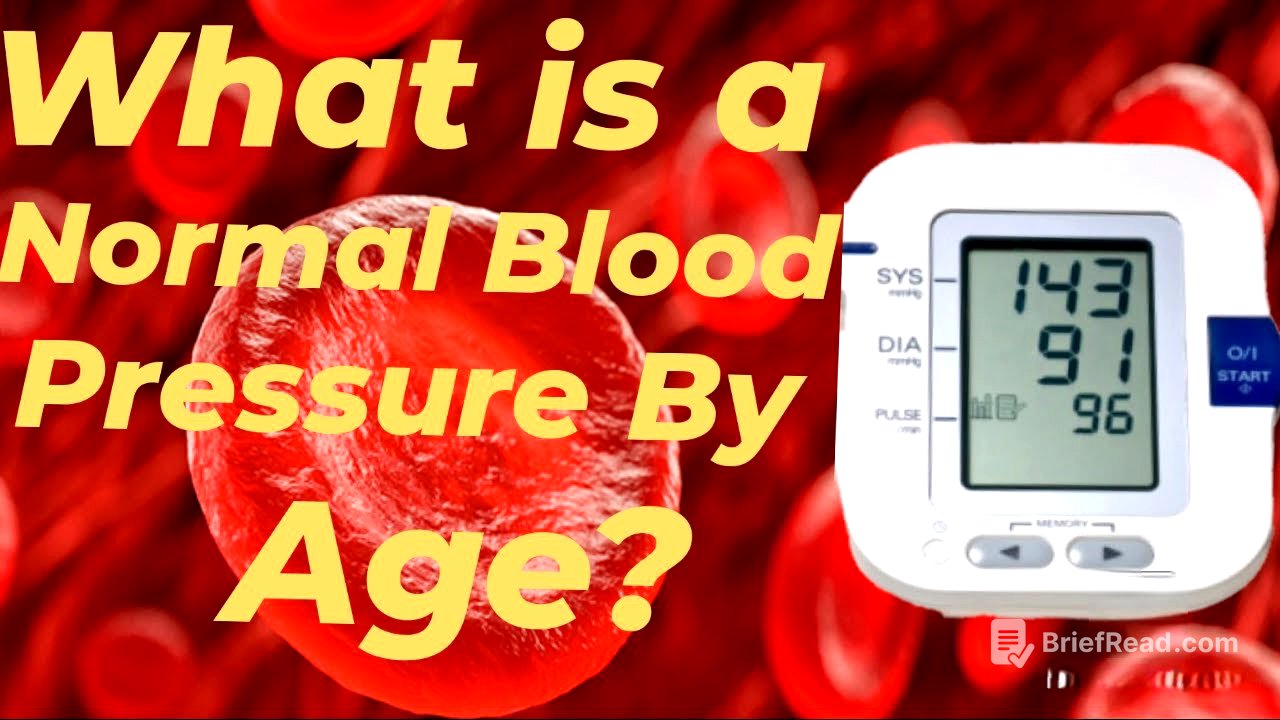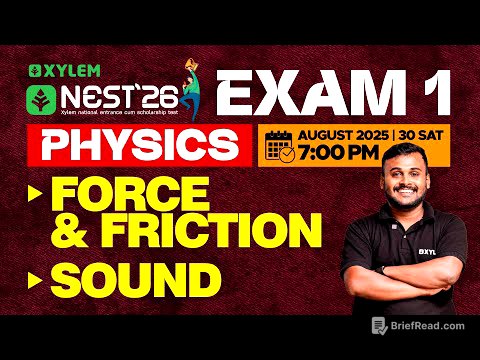TLDR;
This video discusses the optimal blood pressure targets for older adults, considering the 2017 ACC/AHA guidelines and studies like SPRINT and CHRT. It highlights the balance between the benefits of lower blood pressure and the risks of intensive treatment, emphasizing personalized medical advice over strict adherence to general guidelines. The key takeaways include:
- The 2017 ACC/AHA guidelines lowered the threshold for hypertension to 130/80 mmHg.
- Studies suggest intensive blood pressure control (below 120/80 mmHg) can reduce cardiovascular events but may increase adverse effects.
- Individualized treatment plans are crucial, considering factors like frailty, comorbidities, and potential side effects.
- A systolic blood pressure above 170 mmHg or diastolic above 100 mmHg generally requires medication.
Introduction: Blood Pressure in Older Adults [0:00]
The video addresses the question of what constitutes the best blood pressure reading for older adults, considering the increased likelihood of high blood pressure with age and the potential risks associated with aggressive treatment. It aims to provide clarity on target blood pressure levels for individuals over 65, balancing the benefits of lowering blood pressure against potential adverse effects in this age group. The video encourages viewers to like the video and subscribe for more health-related content.
New Hypertension Guidelines [0:53]
In 2017, the American College of Cardiology (ACC) and the American Heart Association (AHA) released updated guidelines that redefined the thresholds for diagnosing hypertension. These guidelines lowered the blood pressure threshold for hypertension to 130/80 mmHg for all adults, a significant change from the previous standard of 140/90 mmHg for those under 65 and 150/80 mmHg for those over 65. Normal blood pressure is now defined as less than 120/80 mmHg, while elevated blood pressure is between 120-129 mmHg systolic and less than 80 mmHg diastolic. Stage one hypertension is 130-139/80-89 mmHg, and stage two is 140/90 mmHg or higher. This reclassification means that many older adults previously considered to have normal blood pressure may now be diagnosed with hypertension.
The SPRINT Study [2:43]
The Systolic Blood Pressure Intervention Trial (SPRINT), published in 2015, influenced the changes in blood pressure guidelines by investigating the impact of intensive blood pressure control on cardiovascular events and mortality in high-risk adults without diabetes. The study involved over 9,300 participants aged 50 and older with cardiovascular disease risk, excluding those with dementia or prior stroke. Participants were divided into two groups: a standard treatment group aiming for a systolic blood pressure below 140 mmHg and an intensive treatment group targeting below 120 mmHg, which required stronger medications.
SPRINT Study Results and the CHRT Study [4:06]
After three years, the SPRINT study revealed that the intensive treatment group experienced fewer severe cardiovascular illnesses (1.65% per year) compared to the standard treatment group (2.19%). However, the intensive treatment group also had a higher incidence of adverse effects like hypertension, electrolyte imbalances, and acute kidney injury. Another study, the 2021 CHRT study involving over 20,000 Chinese adults aged 60-80, found that targeting a systolic blood pressure below 130 mmHg reduced the risk of major cardiovascular events, especially stroke, compared to a target below 150 mmHg. While intensive treatment also increased adverse events, it lowered all-cause mortality.
Determining the Right Blood Pressure Numbers [5:29]
Most doctors prefer a traditional approach, tailoring treatment to the patient's medical history. While the SPRINT study suggested benefits from a systolic blood pressure of 120 mmHg, this may require too many medications for some individuals, making side effect management crucial. For frail older adults with multiple comorbidities or at risk of adverse effects, a more conservative target of 140-150 mmHg may be appropriate. This approach balances the benefits of lower blood pressure with the risks of aggressive treatment, such as falls due to hypertension.
Individualized Approach to Blood Pressure Management [6:18]
It's important to recognize that blood pressure naturally increases with age due to factors like loss of blood vessel elasticity, hormonal changes, and kidney function changes. Because individual bodies differ, what works for one person may not work for another. Instead of rushing to request more medication if blood pressure is above 120, it's better to allow a doctor to determine the best course of action based on overall health and other medications. The benefits of maintaining blood pressure at 120 may not be worth the physical, mental, or emotional costs and sacrifices, in addition to managing medication side effects.
When to Seek Immediate Medical Attention [7:24]
The video clarifies that it is not suggesting allowing blood pressure to rise to exceedingly high levels. If systolic blood pressure is above 170 mmHg or diastolic blood pressure is above 100 mmHg, medication is generally needed. In such cases, consulting a doctor immediately is crucial. Ultimately, each individual is unique, with distinct medical histories and circumstances. Therefore, it is essential to collaborate with a doctor who is familiar with your medical background, medications, and any side effects you may be experiencing, as their judgment is more valuable than general guidelines.









